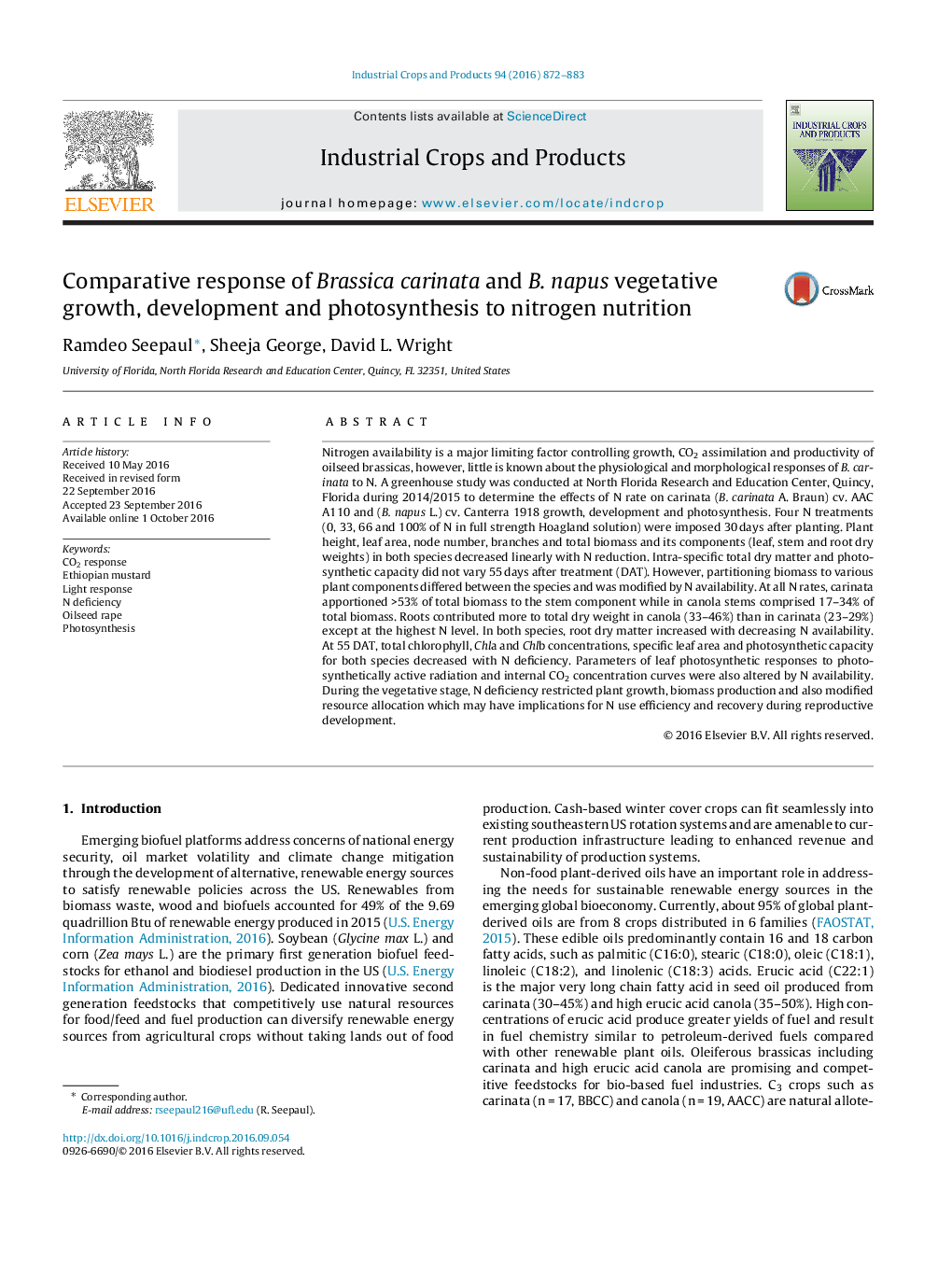| کد مقاله | کد نشریه | سال انتشار | مقاله انگلیسی | نسخه تمام متن |
|---|---|---|---|---|
| 6375525 | 1624816 | 2016 | 12 صفحه PDF | دانلود رایگان |

- Brassica carinata and high eruic acid B. napus are emerging biofuel feedstocks.
- Nitrogen deficiency reduced leaf nitrogen, pigments and photosynthesis of both species.
- Photosynthetic sensitivity to light and carbon dioxide was modified by nitrogen.
- Dry matter and photosynthetic capacity did not differ between species.
- Early season responses to nitrogen deficiency may influence reproductive success.
Nitrogen availability is a major limiting factor controlling growth, CO2 assimilation and productivity of oilseed brassicas, however, little is known about the physiological and morphological responses of B. carinata to N. A greenhouse study was conducted at North Florida Research and Education Center, Quincy, Florida during 2014/2015 to determine the effects of N rate on carinata (B. carinata A. Braun) cv. AAC A110 and (B. napus L.) cv. Canterra 1918 growth, development and photosynthesis. Four N treatments (0, 33, 66 and 100% of N in full strength Hoagland solution) were imposed 30Â days after planting. Plant height, leaf area, node number, branches and total biomass and its components (leaf, stem and root dry weights) in both species decreased linearly with N reduction. Intra-specific total dry matter and photosynthetic capacity did not vary 55Â days after treatment (DAT). However, partitioning biomass to various plant components differed between the species and was modified by N availability. At all N rates, carinata apportioned >53% of total biomass to the stem component while in canola stems comprised 17-34% of total biomass. Roots contributed more to total dry weight in canola (33-46%) than in carinata (23-29%) except at the highest N level. In both species, root dry matter increased with decreasing N availability. At 55 DAT, total chlorophyll, Chla and Chlb concentrations, specific leaf area and photosynthetic capacity for both species decreased with N deficiency. Parameters of leaf photosynthetic responses to photosynthetically active radiation and internal CO2 concentration curves were also altered by N availability. During the vegetative stage, N deficiency restricted plant growth, biomass production and also modified resource allocation which may have implications for N use efficiency and recovery during reproductive development.
Journal: Industrial Crops and Products - Volume 94, 30 December 2016, Pages 872-883